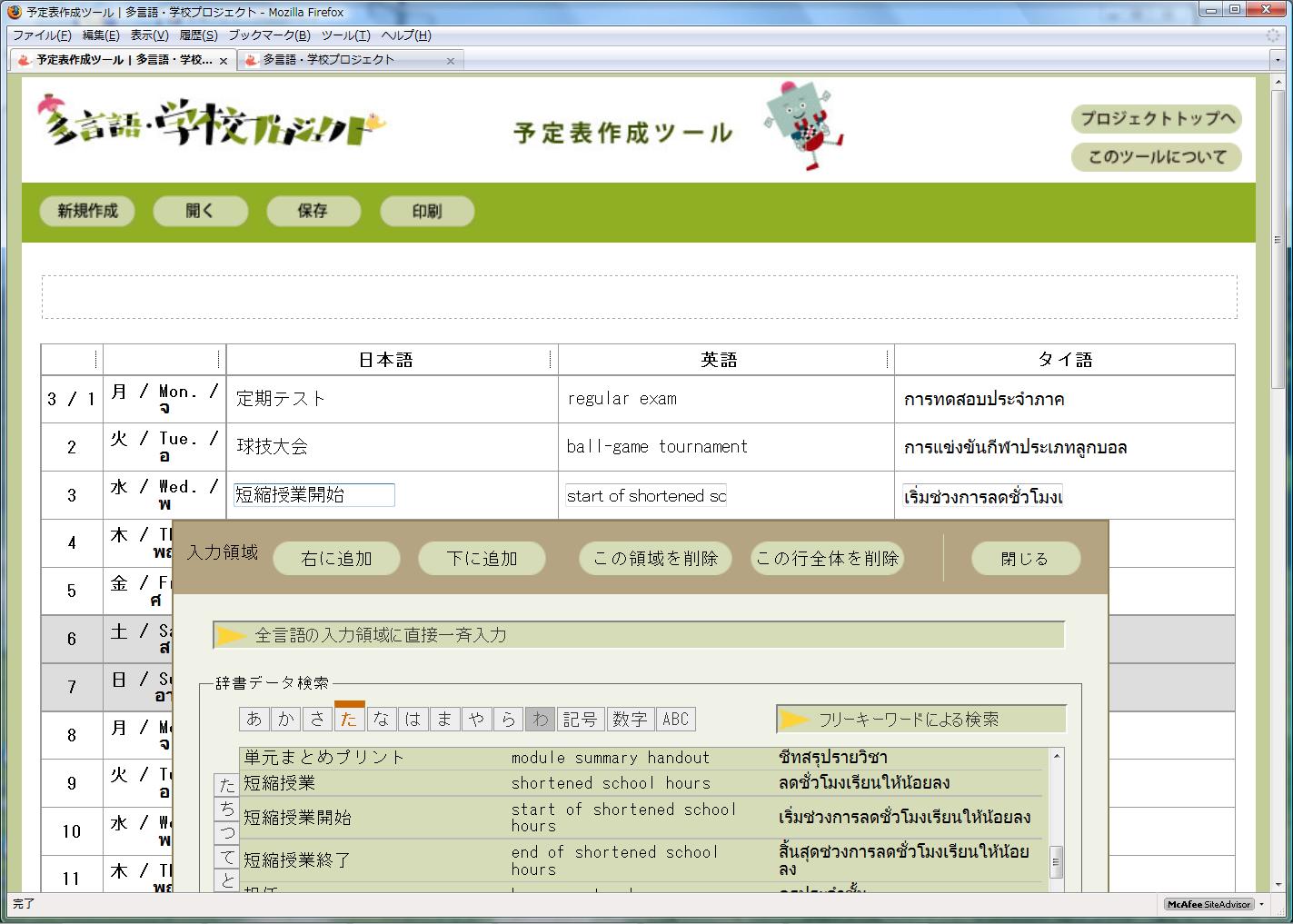Contents
[New Function of the Language Grid Toolbox]
![]()
[New Language Resources]
![]()
[Monthly Maintenance for May and June]
![]()
[Language Grid Users] Hori Laboratory, Kansai University
![]()
[Message from Editorial Board Member]
![]()
New Function of the Language Grid Toolbox
New functions of the Language Grid Toolbox have been released.
■Collaborative Translation
Collaborative Translation helps users collaboratively translate documents by tracking the translation status.
It also provides interfaces for accessing dictionary/parallel texts/glossaries to support translation.
Moreover, users can compare the translation quality of different translation services by concurrently executing certain translation services.
■Translation Task Management
This function manages the translation task, consisting of two steps: "Smoothing" and "Proofreading."
"Smoothing" means revising the results of machine translation by monolinguals for fluency.
"Proofreading" refers to corrections by bilinguals for translation accuracy.
This function enables users to set deadlines and assign responsibility for each step,
and to associate the task with the file created by collaborative translation.
■Storefront Support
This function supports communication at the storefront or reception using a multilingual Q&A registered at Toolbox.
The question and answers are displayed in the languages of both customer and clerk.
The answers can be associated with maps and images.
■Q&A Web Interface
This function enables users to post a question via an interface on the website to a community that uses Toolbox.
People in the community discuss the question and provide an answer on the multilingual BBS.
The question and answer are registered with the multilingual Q&A on Toolbox.
Thus, the user who posted the question can search for the answer from the website.
■Showroom
Showroom makes the contents of BBS and Discussion visible to people who do not have a Toolbox account.
Using this function, the community that uses Toolbox can make public their multilingual activities.
Collaborative Translation, Translation Task Management, and Storefront Support were developed by Kyoto City.
Q&A Web Interface and Showroom were developed by Kyoto University.
New Language Resources
A new language resource is available.
VoiceText (provider: Ishida and Matsubara Lab., Kyoto University)
VoiceText is a text-to-speech engine that outputs voice audio file for entered text.
VoiceText supports Japanese, Chinese, and English as input languages, and wav and ogg files as output files.
Monthly Maintenance for May and June
The next maintenance of the Language Grid will be conducted on Monday, May 10th and June 7th at 18:00窶骭21:00 JST.
If you wish to use the Language Grid during this period, please contact us in advance at operation [at] langrid.org.
Language Grid User: Hori Laboratory, Kansai University

Screenshot: Multilingual Support for Education
At Hori Laboratory, Faculty of Informatics, Kansai University,
we research methodologies for evaluating the usability of information systems and methodologies for designing information classification systems from the perspective of user-centered design.
At the Language Grid Association, we have been participating in the activities of the Special Interest Group on Multilingual Support for Education (SIGMUSE).
For instance, we have been classifying multilingual school documents provided by related organizations in Japan, constructing a portal site for searching these documents based on the classification, and developing multilingual scheduling tools.
Our development is supported by the Asian Neighbors Program of the Toyota Foundation, and we are collaborating with Kita Laboratory, Faculty of Informatics at Kansai University, in collecting school glossaries and parallel texts that are required for the tools.
These tools have already been released on the site of the Multilingual Support for Education in October 2009. Moreover, we also provide the multilingual glossary and parallel texts for school education as language resources to the Language Grid.
(Masahiro Hori, Professor, Faculty of Informatics, Kansai University)
----------------------------------------------------------------------------------------------------------------------------------------
[Message from New Editorial Board Member]

Hello everyone, my name is Asuka Miyaguchi and I have taken over the editing of the newsletter from former editor Tsunokawa.
The newsletter will be issued every second month from this issue, No. 22.
We thank you for reading and appreciate your continued support!
(Asuka Miyaguchi, Language Grid Project)
